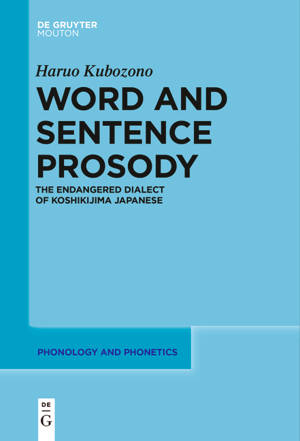
- Retrait gratuit dans votre magasin Club
- 7.000.000 titres dans notre catalogue
- Payer en toute sécurité
- Toujours un magasin près de chez vous
- Retrait gratuit dans votre magasin Club
- 7.000.000 titres dans notre catalogue
- Payer en toute sécurité
- Toujours un magasin près de chez vous
Description
This is the first comprehensive work on word and sentence prosody in Koshikijima Japanese, a dialect of Japanese not fully documented in the literature. It is an endangered dialect spoken by about 2,000 speakers on a small southern island in Japan. Being separated from mainland dialects by the sea, this dialect exhibits unique prosodic features not shared by other Japanese dialects. It also exhibits considerable regional variations among the ten or more small villages that were isolated from each other until recently.
Based on the author's fieldwork, the book analyzes word accent and intonation, the two linguistic areas in which this endangered dialect exhibits unique features and remarkable regional variations within itself. They include the emergence and development of a secondary H tone, postlexical deletion of the primary H tone, and the L boundary tone in question and vocative intonation. These phenomena bear crucially on general issues in prosody, including postlexical tonal neutralizations, competitions between lexical and postlexical tones, and the number of tones that a syllable can maximally bear. The book thus demonstrates the relevance of studying an endangered language/dialect in general linguistic contexts.
Spécifications
Parties prenantes
- Auteur(s) :
- Editeur:
Contenu
- Nombre de pages :
- 235
- Langue:
- Anglais
- Collection :
- Tome:
- n° 31
Caractéristiques
- EAN:
- 9783111523156
- Date de parution :
- 17-06-24
- Format:
- Livre broché
- Format numérique:
- Trade paperback (VS)
- Dimensions :
- 156 mm x 234 mm
- Poids :
- 371 g







